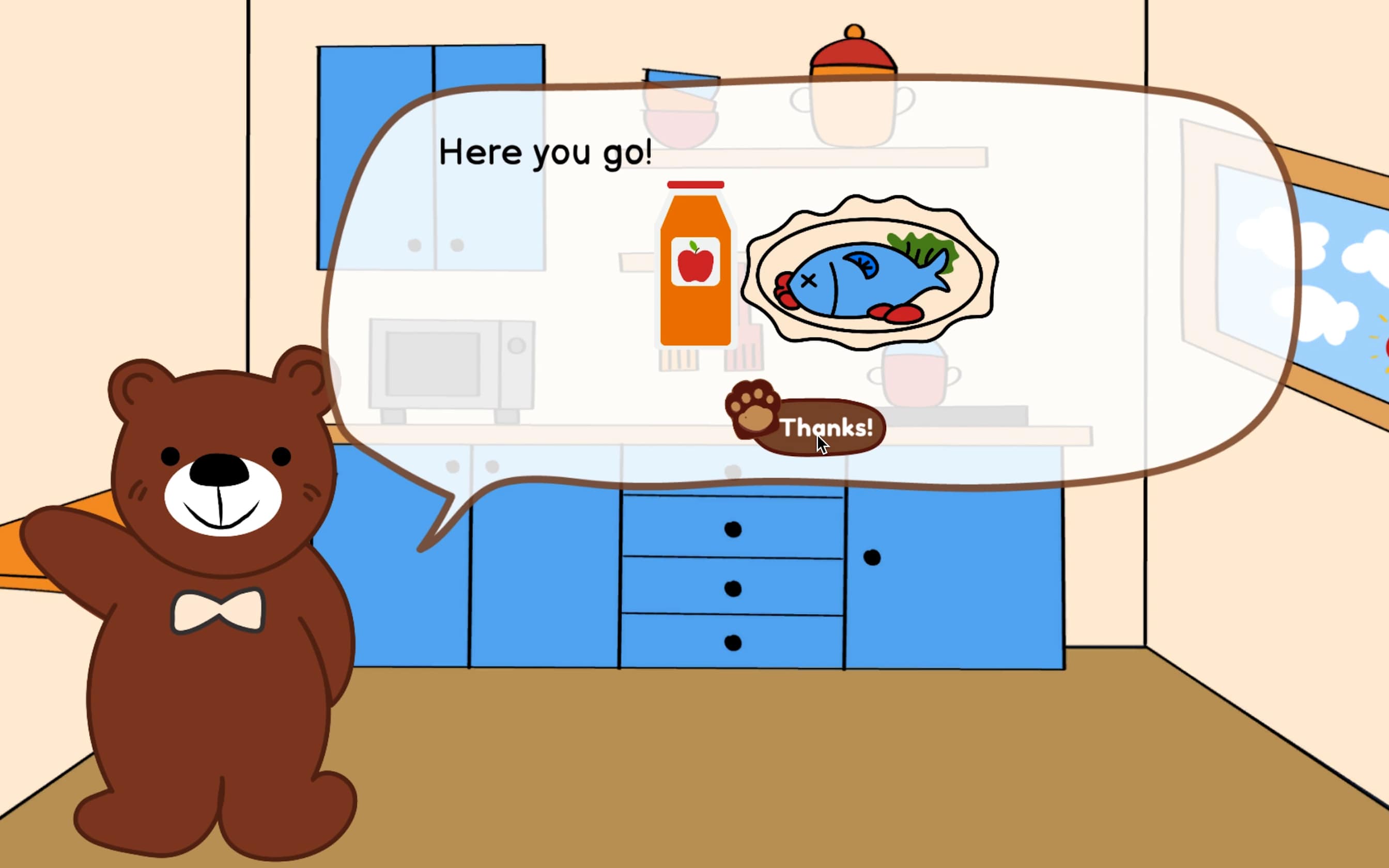PROJECT OVERVIEW
- A cross-course project as part of UTSC New Media Program: Application Software for Interactive Media; New Media Design; Interface Design, Navigation and Interaction II; Project Management
- Platform used: Unity, Google Drive, Adobe Illustrator
- Team member: Xiaohan Hou, Zike Huang, Ying Liu
- Timeline: January 2022 - April 2022
- Game developer: responsible for writing the codes and building it in Unity
- Collbaroted with the team to develop style guide and presentation
- Oversaw the development of game arts assets
- Develop an original 2D storyline game from scratch - including codes, graphics, and animations while incorporating UX/UI principles
- Link to the GitHub
- Link to the game application
HOW IT STARTED
Discuss scope, topic and ideas
Due to the time and scope constraints, the team had and decided on sticking to a 2D game. After some iterations, we finalized that our game is going to be a cartoon-style 2D storyline game: A bear looking for food in the forest, incorporating two mini action games. We also did some initial sketches/storyboarding to help present our ideas to the professors and get some feedback.


Project Timeline & Collboration Plan
Given that the project is going to be very team - I am going to be in charge of programming/unity operation, while the two other students will take care of game assets and UI elements, we created a rough project timeline to help us stay on track, as well as a RACI chart to outline our distribution.
CHALLENGES
There were some challenges that I faced myself as the developer of the game, as well as some challenges the team faced together to create the game in a short amount of time:
1. Quickly picked up Unity from stage 0
As someone who was fresh to game development, the end goal of creating a game project at the end of the three months seemed very overwhelming. Therefore, I did my research and started with a highly-recommended unity tutorial for beginner, where I was able to have a great understanding of unity interface and how to write C# scripts, which built an important foundation for me to program the mini-games.

2. Dealing with multiple music tracks

When I thought I was almost done with the programming, only left to add the music tracks, I encountered some unexpected issues with musics. The game has a couple of music tracks: one generic, and two for specific mini games, and sound effects.
After extensive researching on stackoverflow and reading unity documents on audio source, I figured out the problem can be avoided by checking if there is instance before a scene is loading and successfully solved this issue.
3. Issues with the color pallete
As mentioned above, we created a color palette as part of the style guide to make sure we were on the same page (first image). however, in the process of creation, my peer found that the color palette was. I was not heavily involved in the art assets creation, initially, I wasn't too alerted by the issue until my peer brought it up for another time.
After several discussion in the group chat and in the meeting, we all agreed that we did need to expand the color palette; however, when adding more colors into the design, we want to update the palette and also keep track of the use of color. Therefore, we got a more updated color palette (second image).
REFLECTIONS
The project was stressful at some points, but it has also gave me a lot to reflect on:
1. Never say impossible: To be honest, I had a lot of fears of Unity at first - the interface itself is intimidating. However, through continuous learning in small-chunks, this seemingly impossible project took of way better than I expected. This really taught my the importance of breaking down things into small chunks to learn, and the importance of having faith in yourself.
2. Putting myself in the shoes of others: As I was in charge of the programming aspect of the project, I am relying heavily on my peers for the assets part of the project, which pushes me to learn how to listen and understanding, not only from my own point of view.























